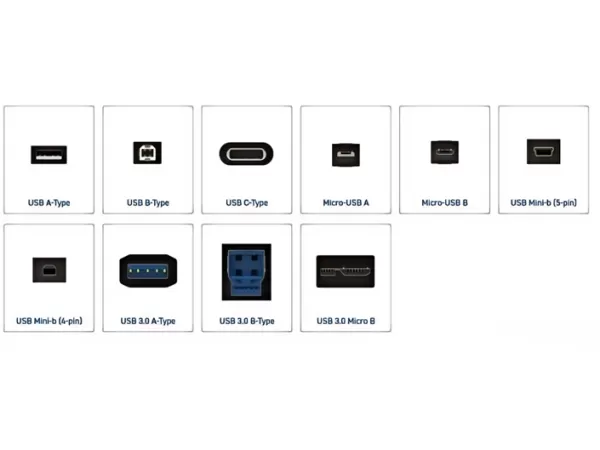USB Connector type

USB Connector type
USB A-Type: Commonly found on computer hosts and hubs, a flat rectangular interface.
USB B-Type: Commonly found on USB peripherals, approximately square in shape. Usually used as one end of a USB AB cable.
USB C-Type: supports reversible insertion and is compatible with USB 3.1/3.0/2.0/1.1 specifications. Often used in conjunction with USB-A, USB-B, USB Micro-B and other USB connectors.
Micro-USB A: USB-IF certified, provides a smaller interface than USB Mini-b while still supporting 480Mbps transfer rate.
Micro-USB B: Provides a smaller interface than USB Mini-B while still supporting 480Mbps transfer rates.
USB Mini-B: The interface is larger and is not suitable for compact devices. USB 3.0 A-Type: Commonly used in computer hosts and hubs, SuperSpeed, born for high-speed applications, supports up to 5Gbps transfer rate, and is backward compatible with USB2.0/1.1. Blue, easy to identify.
USB 3.0 B-Type: Applied to USB 3.0 devices to transfer data and power in USB SuperSpeed applications. Cables with this interface are not backward compatible with USB 2.0 or USB 1.1 devices; however, devices with this interface can accept previous USB 2.0 and 1.1 cabling.
USB 3.0 Micro-B: Used on USB 3.0 devices to transfer data and power in USB SuperSpeed applications. Cables with this connector are not backward compatible with USB 2.0 or USB 1.1 devices.